Media library
Documentary, graphic and/or audiovisual knowledge objects are offered here, offering information on various sectors and topics. Use the keyword search or search filters to access current audiovisual and documentary knowledge objects useful for your implementation.
If you have any questions or suggestions, please contact us here.
Avian Influenza Biosecurity Standards
Basic biosecurity standards for the prevention of avian influenza
Surveillance and control program for Salmonella serotypes of public health importance in poultry farms in Andalusia
Salmonellosis is a disease of humans and animals caused by microorganisms of the Salmonella genus belonging to the Enterobacteriaceae family. This family is composed of many serotypes. Not all serotypes are important in animal health, as some do not cause disease in animals. However, they are important in public health because they are the cause of one of the main foodborne illnesses.
Newcastle Disease Surveillance Program in Domestic Poultry 2024
Newcastle disease virus (NDV) belongs to the Paramyxoviridae family in the Avulavirus genus. There are ten avian paramyxovirus serotypes designated APMV-1 to APMV-10, and the Newcastle disease virus has been designated APMV-1.
Avian Influence Surveillance Program in Domestic Poultry
Avian influenza (AI) is a highly contagious and extremely variable infection of poultry and wild birds, the latter acting as a natural reservoir. Disease can range from moderate to severe, but only the H5 or H7 subtypes cause Highly Pathogenic Avian Influenza (HPAI), the most severe strain. These are extremely contagious and virulent strains, causing high mortality in poultry.
Avian flu: information brochure
Avian influenza (bird flu) is a disease caused by a virus that can affect most birds, both domestic and wild. This virus can also cause illness in humans. In 2003, an outbreak began in Southeast Asia and has gradually spread to other parts of that continent, as well as to Europe and Africa.
Health Surveillance Program for Pigs
The Spanish pig sector is the main livestock sector in our country, and is among the leading producers in Europe and worldwide. Its stability depends largely, and increasingly each year, on the level of exports of live animals and their products to other Member States and third countries.
Aujeszky's disease. Disease control and epidemiological situation.
Aujeszky's disease, also known as swine pseudorabies, is an infectious disease caused by a herpesvirus that infects the central nervous system and other organs, such as the respiratory tract, in many mammals (such as dogs, cats, cattle, rabbits, foxes, minks, etc.) except in humans and tailless monkeys, with the pig species being particularly important from a health and economic point of v
Swine Biosecurity Triptych
Decalogue of biosecurity in pig farms
National Contingency Plan against Trichina
Trichinosis is a parasitic disease that affects humans and numerous host species, mainly wild and domestic mammals, caused by various species of the genus Trichinella.
Guide to good practices for the control and reduction of salmonellosis in pig farms
Salmonellosis is a major concern for public health authorities in the European Union. Every year, thousands of people become infected with Salmonella from consuming food contaminated by this bacteria. It is the leading cause of death from foodborne infections in developed countries.
Article in the official magazine of the National Veterinary Corps Association
Biosecurity in pig farms: Key to success for the national pig sector
Epidemiological situation of classical swine fever
CSF is a highly contagious disease that affects both domestic and wild swine. It is caused by a virus of the Flaviviridae family, genus Pestivirus, and is characterized by hemorrhagic lesions and is typically fatal in its acute forms, affecting animals of all ages. CSF must be ruled out in any case that presents with hemorrhagic symptoms or nervous symptoms.
African Swine Fever Situation
ASF is a highly contagious disease caused by a virus of the Asfarviridae family, genus Asfivirus. Some strains can cause acute or hyperacute symptoms with mortality and morbidity rates approaching 100%, while other strains cause sub-acute or even chronic clinical symptoms with lower mortality.
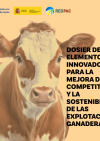
Dossier of innovative elements for the competitiveness and sustainability of livestock farms
This Dossier of innovative elements for improving the competitiveness and sustainability of livestock farms shows some innovation possibilities so that whoever uses it can delve deeper into those that interest them the most based on their personal characteristics and/or those of their farm.
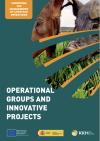
Improving The Management Of Livestock Operations. Operational Groups And Innovative Projects
English translation of a compilation of projects developed through Rural Development Programs, operational groups and innovative projects that are working on issues of improvement in the management of livestock operations.
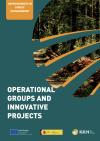
Livestock Breeding. Operational Groups And Innovative Projects
English translation of a compilation of projects developed through the regional and national Rural Development Programmes, operational groups and innovative projects that are working on livestock breeding.
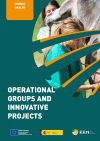
Animal Health. Operational Groups And Innovative Projects
English translation of a compilation of projects developed through regional and national Rural Development Programmes, operational groups and innovative projects that are working on animal health issues.
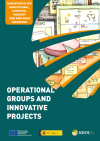
Marketing In Agricultural, Livestock, Forestry And Agri-Food Industries. Operational Groups And Innovative...
English translation of a compilation of projects developed through EAFRD funds, operational groups and innovative projects working in marketing in the agricultural, livestock, forestry and agri-food industries sectors.
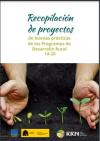
Compilation of good practice projects from the Rural Development Programmes 2014-2020
This compilation includes projects considered good practices, due to their possibility of being replicated and for making good use of the funds received, through the different measures of the regional Rural Development Programmes (RDP). It includes projects from several autonomous communities and several measures.
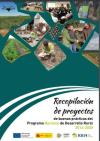
Compilation of good practice projects of the National Rural Development Program 2014-2020
Publication compiling 22 projects and actions considered good practices within the framework of the different measures that make up the National Rural Development Programme 2014-2020.



